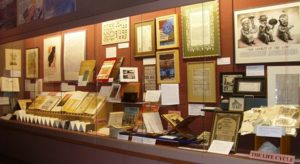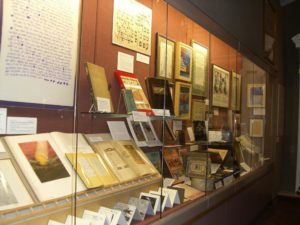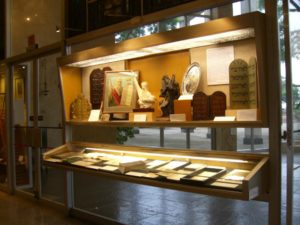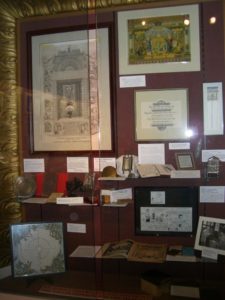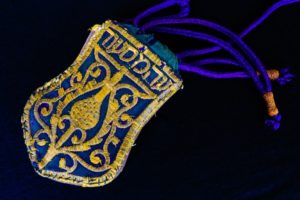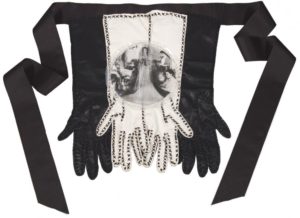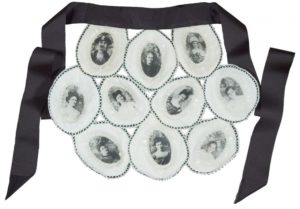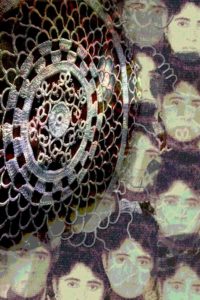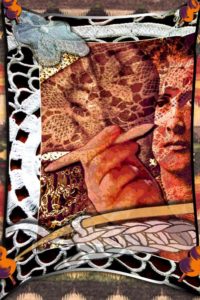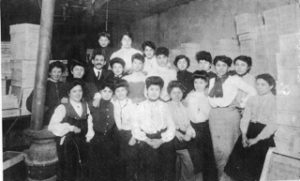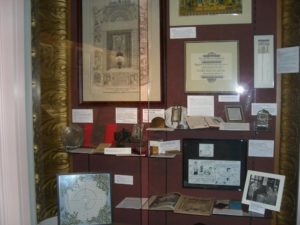-
March 11 – July 14, 2012
Uncommon Threads: Historic Textiles: Contemporary Conversation
An exhibition of both contemporary works and selections from the museum’s exceptional collection of Judaic textiles
In cooperation with FIBERPhiladelphia www.fiberphiladelphia.org
Exhibiting Artists: * Member of the KI Artists’ Collaborative
Marlene D’Orazio Adler *, Pat Cudd (guest artist), Rhea Dennis *, Naomi Godel *, Rachel Kanter (guest artist), Ricki Lent; Paula Mandel (guest artist), Robyn Miller *, Linda Nesvisky *, Sophie Sanders; Karen Shain Schloss*, Marguerite Shimmons (guest artist), Joan Myerson Shrager *, Stan Singer *
INTRODUCTION:
Uncommon Threads: Historic Textiles: Contemporary Conversation is an exhibition of both contemporary works and selections from the museum’s exceptional collection of Judaic textiles mounted in cooperation with FiberPhiladelphia.
In our title, the word “Conversation” has special meaning. There are many conversations/collaborations surrounding this exhibition and within it. This is the first time that TJMuseum has participated in a significant city-wide arts project, and the works presented here were selected specifically to resonate with the larger community of exhibitors. This is also the first collaboration between this museum and the Philadelphia Museum of Jewish Art at Congregation Rodeph Shalom, which is also a participant in FiberPhiladelphia. In our two exhibitions we present different aspects of a shared concept through the work of an exceptional artist, Rachel Kanter.
Within Uncommon Threads the conversation continues. Members of the KI Artists’ Collaborative and selected guest artists were invited to create works that would explore connections between their practice and the fine textiles in the museum’s permanent collection. Many of them visited the collection to explore our expansive collection in person.
*Some, like Linda Nesvisky and Pat Cudd, were inspired by our spectacular Masonic – Order of the Golden Chain - Apron. (Main gallery)
*Naomi Godel created a wimpel that draws inspiration from a very rare 17th century wimpel. (Naomi’s is in the main gallery and the 17th century one is in a lobby showcase)
*Rachel Kanter, Ellen Tilman and Marlene Adler look at clothing as part of prayer ritual in the traditions of a Tallit and Tallit Katan. (In the main gallery in the small showcases and in the large “Ark” showcase)
*Karen Shain Schloss took a different tack. As a calligrapher Karen has always been amazed by the calligraphy that is integral to the 1970s stained glass windows in KI’s Neumann Chapel. For this show she brings her own style to extend this conversation from the 1970s to 2012. (Karen’s work is displayed in the lobby’s center showcase, a few steps from the chapel).
*Many of the artifacts in the museum’s textile collection are the hand work of women, much of it centered around family ritual. Marguerite Shimmons, Joan Myerson Shrager, Robyn Miller, Sophie Sanders and Paula Mandel all delve into the role of handwork, women and family in our society, from the very personal to the almost global. (Main gallery and lobby)
*Diane Pieri takes us to a more whimsical place through her “No Heels Allowed” handbag. But the Halitzah Shoe, (displayed nearby) from our collection, represents a Jewish ritual that is anything but humorous. (Main gallery large showcase)
*Francine Strauss and Rhea Dennis have chosen to explore the world of mysticism, ritual and fantasy. The mezuzah, tefillin and hamsa can all be seen as forms of amulets, much as a treasured doll can be for a child. Dennis and Strauss begin with a childhood vision but take us to a different place. Their works are paired with amulets, tefillin and dolls from the collection. (Main gallery)
*Stan Singer is a photographer. His challenge was to find a way to match his medium with our theme, “Uncommon Threads”. His photo essay does just that. By looking at a little noticed aspect of our textile collection – the names of the donors stitched or woven into the various fabrics – he brings us to a new awareness of the stories these treasures have to tell. (Main gallery)
Finally, members of the broader KI community were invited to display the wonderful handmade Tallitot (plural) created within their own families to celebrate Bar and Bat Mitzvot and to be worn during public prayer services. We appreciate their willingness to share them for this exhibition.
Rita Rosen Poley Karen Shain Schloss
Director/Curator Museum Chair
RABBI’S STATEMENT: A Red Thread
Fabric and, more specifically, thread has been a big part of my life. Before our family fled and resettled in the United States, my mother’s father, Max Sacki, produced silk thread products in his factory in Bamberg, Germany. Today, his factory has been renovated and is the new Jewish Community Center of Bamberg, complete with a synagogue, mikveh (ritual bath), Hebrew School and Interfaith Learning Center.
In 1992, when I went to Bamberg for the first time, I located the then abandoned factory
(it still had a hole in the roof from an American bomb dropped from an airplane). It was a very strange, even eerie experience. The building was completely empty but still worth exploring. I combed all of it and decided to go into the basement. I found one free standing closet downstairs with its doors ajar. When I opened the closet, I was amazed to see red silk spools lined up on the shelves. I took as many of them as I could carry.
When I got home, the family gathered around my parent’s dining room table. Without saying a word, I took the spools out of my luggage and set them on the table. It was a rare moment when my childhood house was silent. But the sight of the spools brought everything and everyone to a total stop. “Where in the world did you find them?” someone barked. I explained. They were amazed. No one had seen such a spool in over fifty years.
“I didn’t know they even existed anymore,” someone whispered.
My mother then told us that when she had left Germany, alone as a child in 1938, her parents had taken empty spools, wrapped money around the central axis, and then, by hand, wound the silk so that they looked like business samples. Thus, they provided my mother with financial resources for the road. If not for a red thread, I would not be reporting this story. Along the way, I learned about a kabbalistic practice of wearing a red thread. Peddlers sell them at the Western Wall in Jerusalem. The first time I purchased a red Jerusalem thread, the seller told me I should wear it because it would bring me good luck. “You bet your life,” I said as I put it on my wrist and then proceeded to go to the Wall to give thanks for my family whose life literally hung by a thread. Rabbi Lance J. Sussman, Ph.D.


